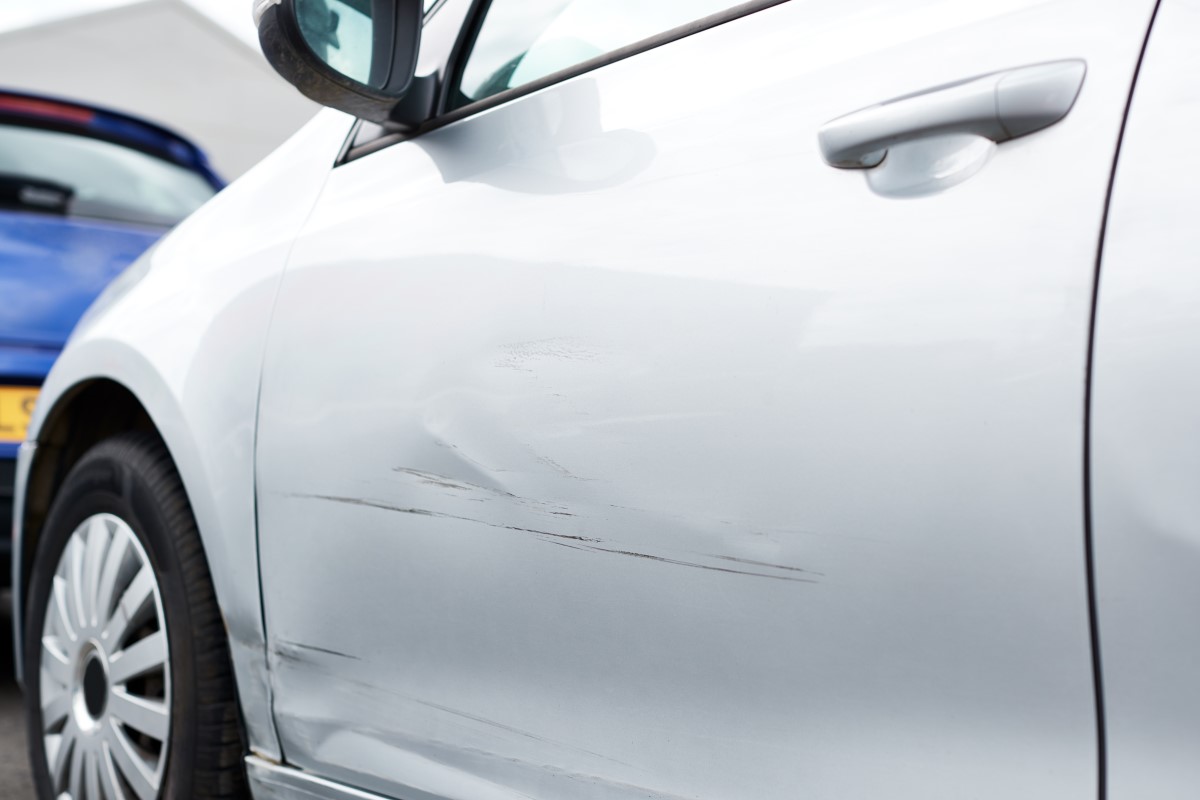
Have you ever been walking to your car and for a moment you thought you saw a dent and upon looking closer, you were relieved to realize it was just the contour of the panel or the design you never really noticed? You were relieved until you noticed a slight break in the paint. One of the most common occurrences had fallen upon your vehicle; the worst possible damage to your perfect vehicle glared back at you. A scratch! A scratch that you did not cause, or at least you don’t think so. A scratch that appeared out of nowhere. A scratch that had you wondering: “How long has this been here?”
We’re talking about the type of scratch that will have you scratching your head and recalling your week backward: “Where did I go last Monday?” “Who was with me?” “Where did I park?”
Wondering and worrying unnecessarily can be unnerving. While scratches might be minor flaws, they are unsightly and troublesome to many owners. They can also be the type of damages that could be small, yet costly to repair depending on the depth of destruction. But did you know that there are different types of scratches? Not all scratches are treated the same.
At Liberty Collison, we can handle all types of scratches that roll into our body shop. And fortunately, not all scratches require sanding and a new coat of paint. We will tell you about the different types of scratches so you will know the degree of damage because we know scratches always occur.
Shallow Scratches
So you noticed you have a scratch on your car. Yikes! It doesn’t matter if it’s your new BMW or a hand-me-down Nissan Altima; scratches hurt the car and the human owner! However, if the car’s paint isn’t damaged and only the top sealing coat is affected, there is hope. If this is the case, the shallow scratch can probably be buffed off. Minor scratches are easy to sand away using polish and a bit of energy to remove.
Light scratches
Cars have clear coats designed to take the punches of daily driving and environmental weathering. Light scratches can happen from tiny pebbles flying from the road that might hit the car or from trees and shrubs that might brush against the car in a driveway. However, the good news is that repairing these blemishes is relatively easy and may not require repainting the whole car panel. As long as the clear coat maintains a minimum thickness, it can be carefully sanded, polished, and buffed to remove most scratches and expose a transparent, glossy, and highly reflective finish.
Paint transfer scratches
Paint transfer happens when your car comes into contact with another vehicle or a motionless object, almost like a bad game of bumper cars. If some of the paint from the other vehicle or object embeds itself into the clear coat during the impact, don’t panic. Most of the time, the damage looks worse than it actually is. It’s likely you can take the transferred paint off by rubbing it with a soft cloth. However, if any scraping was involved, more attention may be required such as polishing the surface to restore the shine and reflectivity of the clear coat on the surface.
Deep Scratches
Okay, this part may hurt a little. In some cases, a scratch may be so severe that it reaches the bare metal of your car’s body. This is not good and will require substantial sanding to reduce the degree of missing paint. After the prepped area is sanded, it will need a new primer layer and need to be finished with a matching paint color. Unfortunately, if you have a significantly large scratch, this may require repainting the entire car panel, depending on the severity of the scratch.
Scratches have levels (degrees of damage)!
Deep Scratch Level 1: Base Coat Scratched
These scratches have seeped through the clear coat and exposed the color coat underneath. This level of damage can become an entry point for contamination if left untreated. This is because the clear coat is the only layer made for enduring the outside elements, so if the color coat is exposed, it can lead to erosion.
Deep Scratch Level 2: Metal Scratches
These are the deepest of scratches that affect the actual metal panel. At this point, you may need to use body filler to level out the scratch with the rest of the surface, then build your paint layers up, starting from the primer. The only way to repair these scratches is through sanding and restoring each affected layer individually.
Sealing the Repair
If you want to get in front of the future and try to avoid scratches, car owners can have their entire car resealed to protect the paint further. Protective sealers help bring out your car’s paint color and deflect rough objects and surfaces from scratching your vehicle. Paint sealant is a synthetic product designed to protect a car’s exterior while providing a mirror-like shine. In addition, sealants are chemically engineered to bond to the surface, so they will last much longer than a traditional wax while providing more vital protection against paint-killers like sap, acid rain, and UV rays.
A car scratch is something you should not underestimate and leave unrepaired. It affects your car’s overall appearance and can significantly lower its value. A DIY repair is always an option to fix a scratch. However, there remains the possibility that the damage can be made worse if you don’t have experience in repairing scratches. If you are in the Reno area and want to get your car scratches repaired, or block them before they happen, bring your car into Liberty Collision, where our trained experts can provide preventative service or fix any type of scratch, shallow or deep, to enhance the appearance of your car.
